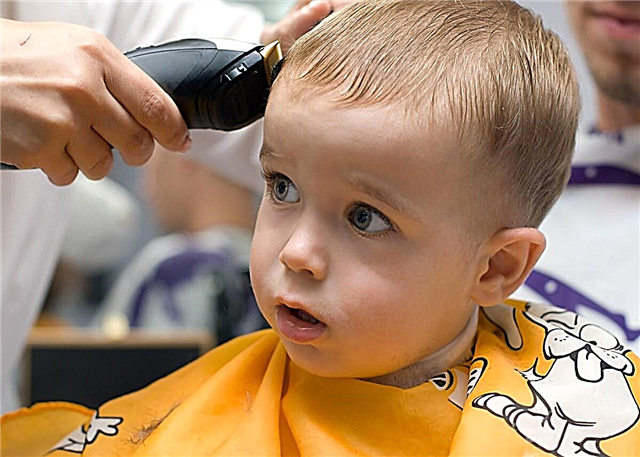Sunglasses are perhaps the most popular summer accessory to protect your eyes from harmful UV radiation. Dozens of different companies present their products for children and adults. However, among all the variety of shapes and shades of frames and glasses, I want to make the right choice. Our tips will help you figure it out.

Why wear sunglasses in the summer?
The intensity of the rays of the ultraviolet spectrum of sunlight is one of the factors that provoke the development of eye diseases. And it is higher in the summer. Sunglasses obstruct certain wavelengths of light by reflecting and scattering them.
Which sunglasses are preferable - plastic or glass?
Today, most of the manufacturers of sunglasses manufacture their products from plastic. The advantage of this material is its relative safety, since children are less likely to be cut by glass fragments when falling or during play. Modern technologies make it possible to manufacture lenses for sunglasses from plastic, taking into account all the necessary standards.
7 tips for choosing sunglasses
 It is important to remember that the main purpose of buying and using glasses is UV protection. There is a special marking that allows you to determine what type of ultraviolet light does not pass this accessory. In addition, the degree of UV protection should be indicated on the glasses. It is not recommended for children to use glasses with 3, 4 and 5 categories, as they are too dark, as a result of this the child will experience discomfort, taking them off even in a moderately lit room. Sunglasses are not used in cloudy weather or indoors.
It is important to remember that the main purpose of buying and using glasses is UV protection. There is a special marking that allows you to determine what type of ultraviolet light does not pass this accessory. In addition, the degree of UV protection should be indicated on the glasses. It is not recommended for children to use glasses with 3, 4 and 5 categories, as they are too dark, as a result of this the child will experience discomfort, taking them off even in a moderately lit room. Sunglasses are not used in cloudy weather or indoors.- Despite the fact that there are sunglasses even for one-year-old children, the recommended age at which to start wearing sunglasses is 3 years. A child of this age is able to understand why, why, and most importantly, how to use them. The use of glasses at an early age is carried out only under the strict supervision of parents. From the age of 12, children begin to wear adult frames and lenses.
- Particular attention should be paid to the material from which the children's glasses are made. It should be flexible, not brittle, not breakable. The temples should be flexible. The frame should fit well without slipping or pinching the bridge of the nose.
- The conservative colors of gray, brown and green are acceptable for use in children. The colors pink, yellow, purple and blue so beloved by adults do not provide sufficient protection from ultraviolet rays, no matter what company they are produced.
- Children's sunglasses must be anti-reflective. The sensitivity of the eyes to sunlight and ultraviolet radiation in a child is an order of magnitude higher. Reflection of rays from smooth surfaces, mirrors and their absorption by the eye can temporarily disorient a child who has received excessive amounts of bright light.
- For children with refractive errors in the summer, you should either darken the glass, or purchase special sunglasses, the lenses of which will correspond to the main diopters.
- Unlike adults, children should choose sunglasses at an optician. Markets and non-specialized stores are inundated with goods, the quality and origin of which are often unknown and sometimes downright terrible. During the fitting, draw the child's attention to how comfortable he is in the selected glasses. Even with minor discomfort, the purchase should be postponed.
Branded glasses are always marked with an indication of the material from which the frame and glass were made, the category and type of protection against ultraviolet radiation, and an individual number. The price of such an accessory is much higher. True, the quality is much better.
If you decide to buy sunglasses for your child, you need to teach him how to use and care for them. Explain how important it is to maintain the integrity of the glasses and frames for extended wear. Purchase a special case and eyeglass care products.
If the glasses are scratched or cracked, they should be replaced promptly, since such damage can lead to various undesirable consequences, including injury to the eyes.
Article rating:

 It is important to remember that the main purpose of buying and using glasses is UV protection. There is a special marking that allows you to determine what type of ultraviolet light does not pass this accessory. In addition, the degree of UV protection should be indicated on the glasses. It is not recommended for children to use glasses with 3, 4 and 5 categories, as they are too dark, as a result of this the child will experience discomfort, taking them off even in a moderately lit room. Sunglasses are not used in cloudy weather or indoors.
It is important to remember that the main purpose of buying and using glasses is UV protection. There is a special marking that allows you to determine what type of ultraviolet light does not pass this accessory. In addition, the degree of UV protection should be indicated on the glasses. It is not recommended for children to use glasses with 3, 4 and 5 categories, as they are too dark, as a result of this the child will experience discomfort, taking them off even in a moderately lit room. Sunglasses are not used in cloudy weather or indoors.

